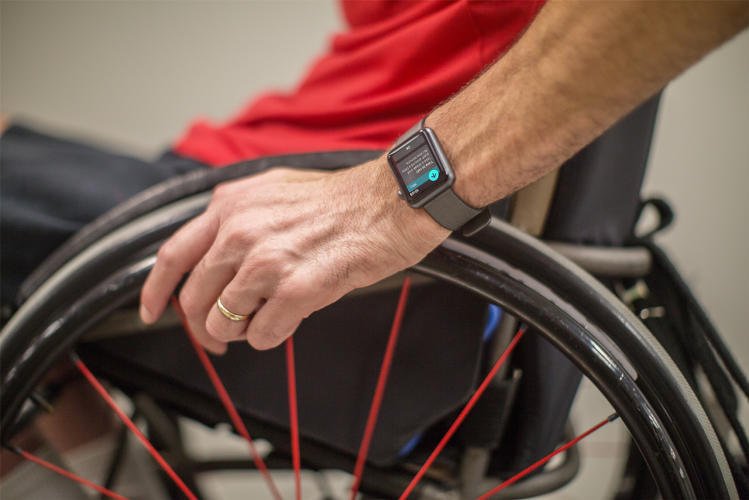See how the Apple Watch helps improve the lives of wheelchair users

Apple is working hard on WatchOS and its accompanying Apple Watch to ensure those who happen to be in wheelchairs are still able to get the most out of the wearables. The company is working on an issue that will affect potentially millions of users worldwide. It's a difficult task too, requiring Apple's engineering teams to completely overhaul deployed algorithms and more. Co.Design sat down with Apple's Ron Huang, director of software engineering, to discuss exactly what this all entails.
Interestingly, the Apple Watch, among other fitness trackers, look for arm movements as well as detecting the heel of one's foot striking the ground to measure steps. Clearly, this way of calculating fitness and movement isn't effective when it comes to wheelchair users. Apple opted to conduct some testing. From the Co.Design piece:
"Each test subject was allowed to use their own wheelchair, which they fitted with special wheel sensors. In addition, many were outfitted with server-grade geographical information systems, which collected extremely precise data on their movements through the world. The number of calories burned, meanwhile, were determined by fitting test subjects with oxygen masks, and precisely measuring their caloric expenditure as they pushed."
More than 3,500 hours of data from more than 700 wheelchair users were collected. It was concluded the more efficient way of enabling those in wheelchairs to effectively track movements was to detect pushes, more specifically the three different types to move around.
"The first is in a semicircle, pushing from 10 o'clock to 3 o'clock. If you've ever pushed yourself around with a wheelchair in a hospital, this is probably the pattern your arms made. The second is called an arc push, and it's what you do when you have to push yourself up an incline: shorter, more powerful pushes with a quick jerk to the return position to prevent yourself from rolling back. Finally, there's the semi-loop-over: a pushing style that tends only to be done in competitive situations, like wheelchair racing, where you're really leaning into the push."
As well as making changes to its algorithms, Apple also has to undergo UI tweaks, one example being the replacement of the Stand ring with a Roll ring in the Apple Watch Activity Tracking. Instead of being asked to stand up every 60 minutes, wheelchair users will be bugged to roll in place for a minute each hour. It's an interesting development for Apple and its wearable tech, making us wonder just what the company could achieve next to help those around the world.
iMore offers spot-on advice and guidance from our team of experts, with decades of Apple device experience to lean on. Learn more with iMore!

